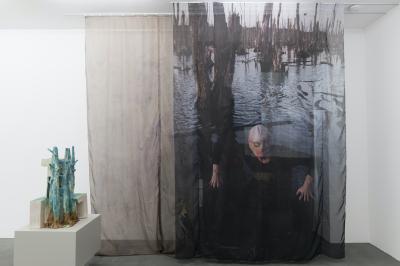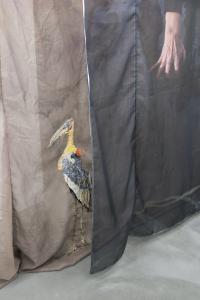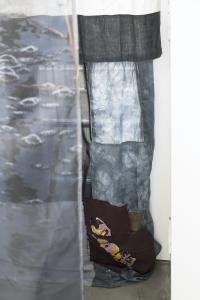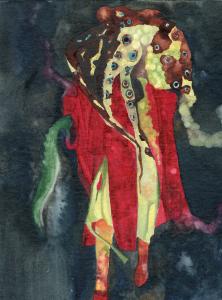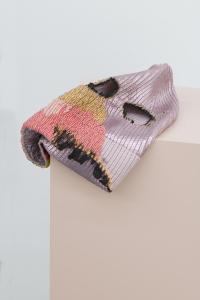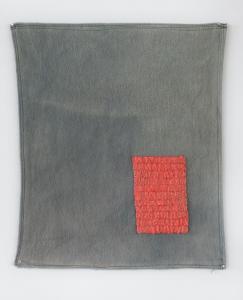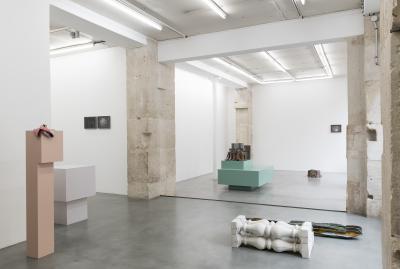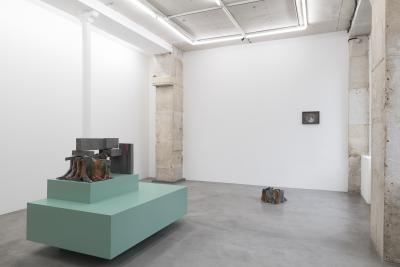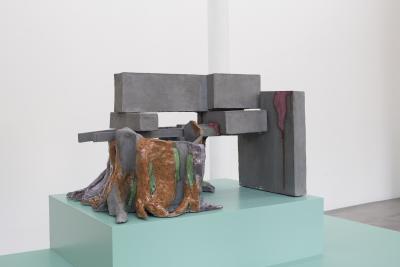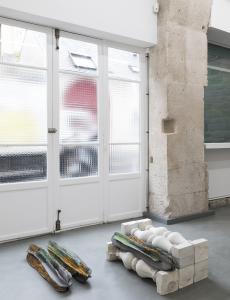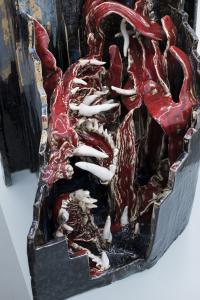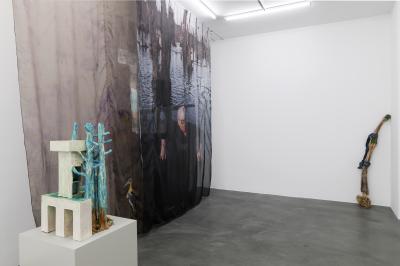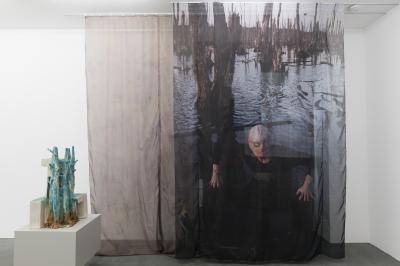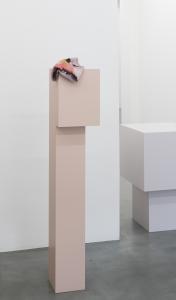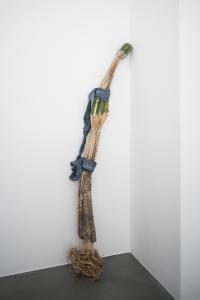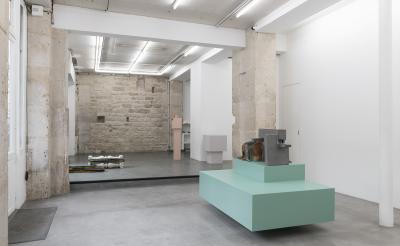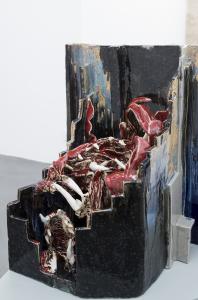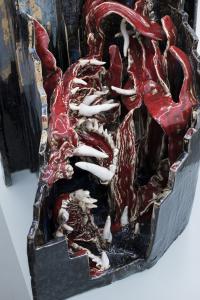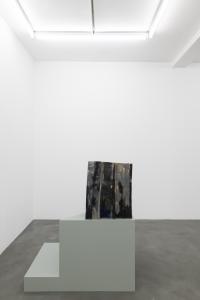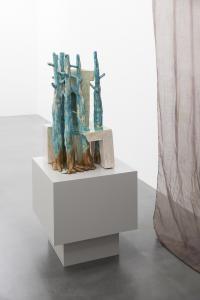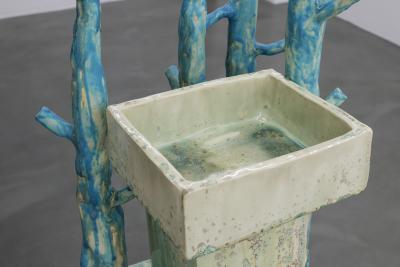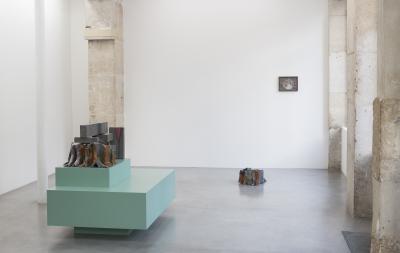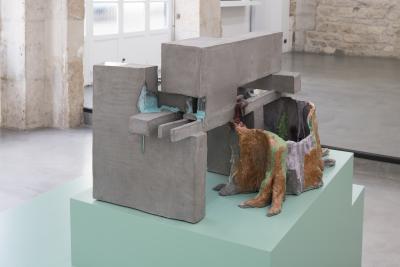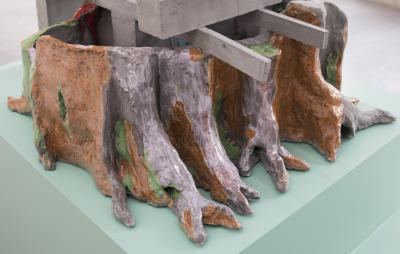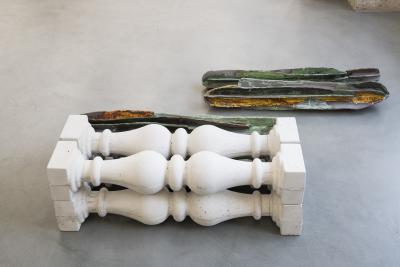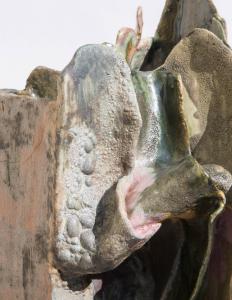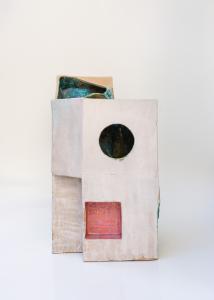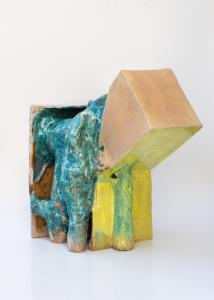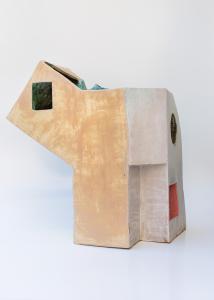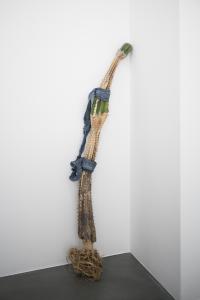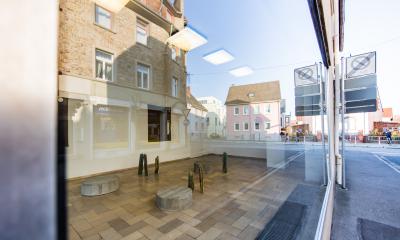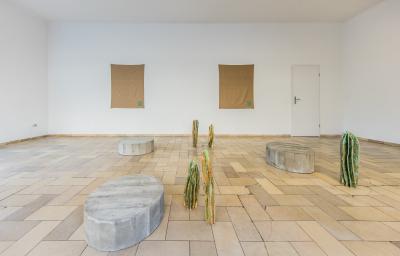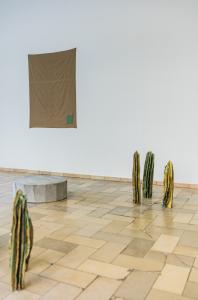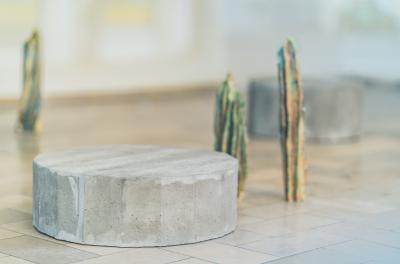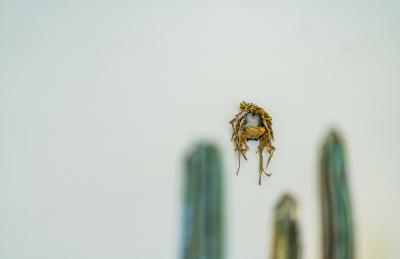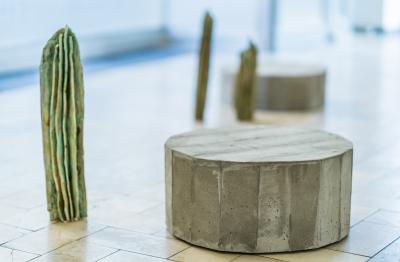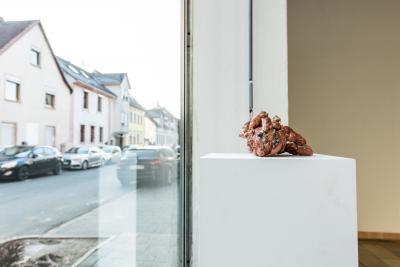Vorhang (Slothrop),
Nr. 457,
Facekini,
Tuch (Plan3),
Metabolic Rift
According to the Marxist definition taken up by John Bellamy Foster, the Metabolic Rift is "the irreparable rift in the interdependent process of social metabolism" (K. Marx, Das Kapital) or the disconnection of the metabolic interaction between humanity and the rest of nature derived from capitalist production and the growing division between the city and the countryside. Isa Melsheimer adopts this concept - recently used in the debate on the new geological era, the Anthropocene, defined by the influence of the human on the environment - to project it on at least two other cultural horizons.
The first is Metabolism, an architectural movement developed in Japan after the Second World War, whose mentor is Kenzo Tange and whose pivotal moment is 1970 Osaka World Exhibition. The futurist and utopian projects of the Japanese metabolists, engaged in the process of reconstruction of Japan from the rubble of
war, was to conceive structures that emulated the functioning of a living organism. Repeatable and multipliable modules like cells, floating ocean-cities, mushroom or bamboo-houses were conceived to give birth to a "vital" architecture and to promote the exchange, the circulation, like a breath, between artifact,
Man and Nature. Futuristic imagination also irradiates the second reference horizon of Melsheimer's show: the literature and visual culture of science fiction. I would say more precisely that this conceptual field allows the artist to stage the set where her story takes place, a set in which Karl Marx's negative parable overlaps with and materializes the utopian/dystopic projections of Japanese metabolists.
From the "metabolic rift" rain into the exhibition spaces glazed ceramic concretions: the series of Bacteria (small shapeless objects, bulbous masses of clotted matter, macroscopic visions of the cells of an organism infected by a virus) inaugurate and accompany the development of the metabolic process. Ceramics comes from clay, clay from the earth - earth and water (the artist herself personally creates the glaze compound) -: the biochemical reactions give rise to effects of synthesis (anabolism) and degradation (catabolism) while the gesture of production refers to an alchemical and almost witchcraft process suggested by the image imprinted on Vorhang (Slothrop). On the curtain (device of the cinematographic-theatrical setting par excellence), the masked artist launches an anathema from a morass. The morass where the image has been taken is called Peenetal (from the Peenetal river name) and it ends in the Peenemünde aerea known for an Army Research Center where, during the Second World War, the German Army conducted experiments on guided weapons and large-scale rockets. The tapered shape of the missiles is suggested both by the work Survival bag, a mummified cactus and shreds of fabric, and by Neon West (pieces of ceramics shaped like cactus and architectural objects in concrete).The environment setting designed by the curtain is dark, perhaps toxic, the one where the Argala Marabou lives (a bird, sewn on the second wing of the curtain, of the family of the stork but who lives in the garbage he eats). The mask (Facekini), as monstrous as the characters of Resident Evil: afterlife, flanks sculptures of miniature buildings with wide open jaws that show rows of bloody teeth (Afterlife) as well as cubic structures invaded by a fluorescent vegetation whose colors seem to change if only you take your eyes away, melted like ice in the sun or under the effect of the infection that pervades the stage space (Peene Valley). Through the "metabolic rift" the vision of the world is dark, of that colour which the bitterness, but sometimes also the irony, has. For those who love science fiction and popular culture it will be ironic to find in the title of Vorhang (Slothrop) the name of the protagonist, Tyrone Slothorp, of Gravity's Rainbow by Thomas Pynchon, a spy-story about sex and weapons that takes place during the Second World War against a dramaturgical tragicomic background. The title of the sculpture Neon West, on the other hand, brings the reflection back to the work of the 'marxist-environmentalist' Mike Davis, Casino Zombies : True Stories form the Neon West. Walking through this microcosm of coloured monads, total units or minimal parts of an evolving whole, the visitor will then be able to reflect on questions that Karl Marx, the metabolists and the authors of sciencefiction have posed in the past on the idea of a future that eminently questions our contemporaneity: sustainability, the survival of Humankind with the environment in its relationship with industry and culture or its disappearance in a process of collapse and dehumanization similar to the destiny of Tyrone Slothorp.
Text: Martina Panelli
